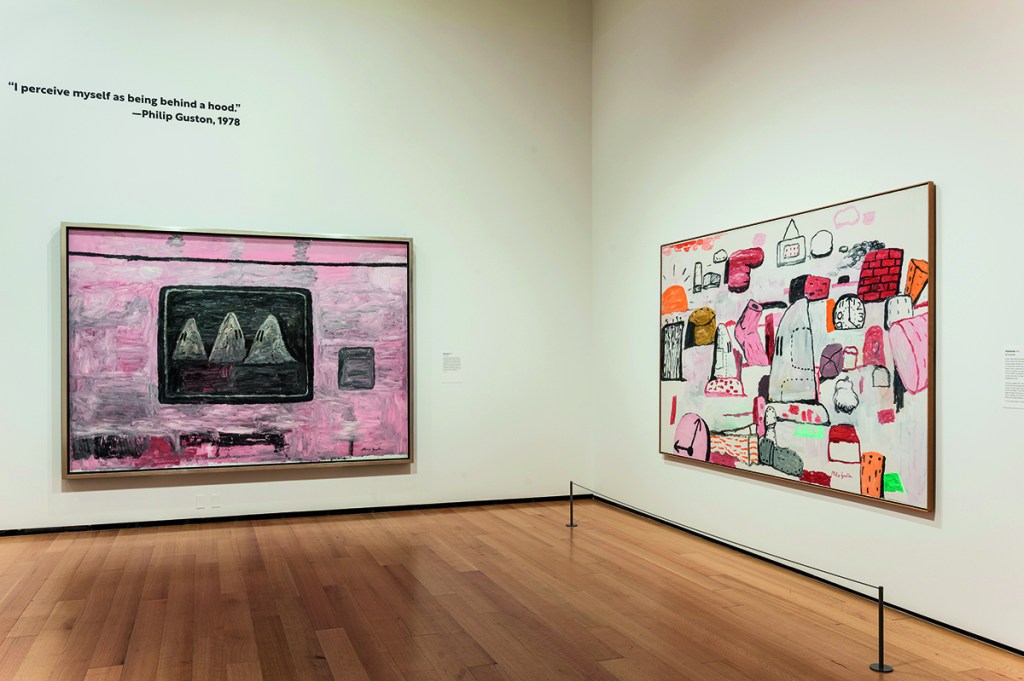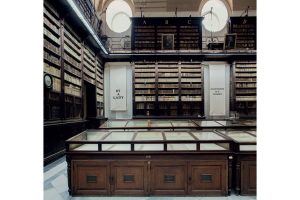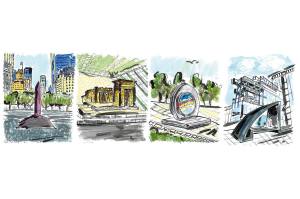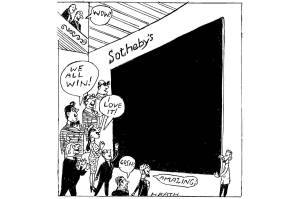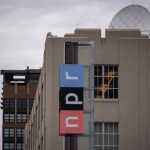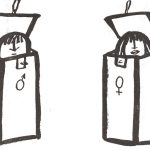It was once a cliché of modern art that its principal aims included shocking its audience. Aesthetic aggression was the correlative of class warfare. It’s no accident, as the Marxists say, that avant-garde comes from the military lexicon. In painting, Gustave Courbet’s 1866 “L’origine du monde,” a rudely realistic, closely cropped view of an anonymous woman’s nude genitals, is often hailed as an early shot across the bow. Five years later, the artist would lead the Paris Commune in toppling over the Napoleonic Vendôme Column. For pugnacious creatives like Courbet and his descendants, consciousness-raising was always going to be a little bit uncomfortable.
One can imagine how easily this gets out of hand. “Art for shock’s sake” was always untenable as an aesthetic philosophy. “Shock art” that was lazy and self-indulgent, subsumed to the logic of marketing and Madison Avenue, was inevitably to follow. Nevertheless, it is true that if modern art is to retain any honest relationship to the deeply discomfiting experience of modern life, it should be at least somewhat contentious, difficult, or even unsafe.
To see just how thoroughly this last sentiment has been rejected by our leading cultural institutions, one need look no further than the first iteration of Philip Guston Now at the Museum of Fine Arts, Boston. For various reasons, the twentieth-century painter (1913-80) has always been a source of controversy. But in the 2020 summer of racial reckoning, precipitated by the police murder of George Floyd in Minneapolis, a small series of Guston’s paintings that incorporates imagery of the Ku Klux Klan ignited a firestorm.
This current exhibition, the first major retrospective of the artist in more than twenty years, was supposed to open just then, in that surreal moment of anxiety and anger, at the National Gallery of Art in Washington, DC. But all of a sudden, Philip Guston Now became anything but, well, “now.” The four participating museums got together and decided to postpone the exhibition for four years, until 2024, when, they said, “the powerful message of social and racial justice that is at the center of Philip Guston’s work can be more clearly interpreted.” Perhaps they thought that by then we’d have solved racism, allowing us to look at Guston in tranquil harmony.
The postponement was shameful and cowardly. Thankfully, it was widely denounced, most energetically by the countless artists and writers who understood the abiding urgency — the timeless “now” — of Guston’s paintings. Capitulating to the backlash, museums cut their planned postponement in half, and so here we are in 2022, with Bostonians now getting the first look at a significantly altered curatorial strategy that is said to reflect what we’ve learned in the intervening years. (It will travel next to Washington, then to the Museum of Fine Arts, Houston, and finally to London’s Tate Modern.)
The results aren’t pretty. At the entrance to the exhibition, visitors are handed an “emotional preparedness” statement, printed on thick, pink cardstock. “You have every right to feel your feelings throughout this exhibition,” says Ginger Klee, MS, LMFT, LPCC. Good to hear! Klee is the “trauma specialist” brought on by the curators to make sure no one stubs any emotional toes: “[I]t’s also important to identify your boundaries and take care of yourself. Critical to the fight for equality, equity, and justice is self-care, rest, education, and community.”
Culture, you see, is no longer a battlefield, but the cozy waiting room of a therapist’s office. Épater le bourgeoisie has been replaced with the Hippocratic command: “Do no harm.” It’s hard to describe how deeply patronizing this all “feels,” as the curators go on belittling the intelligence and fortitude of their imagined public, of which they also seem utterly terrified.
Later on in the exhibition, before a single gallery in which all of Guston’s Klan paintings are sheathed and sequestered (the most important of which, the 1969 “Studio,” has been tucked away within a corny mock-up “studio-within-the-gallery”), visitors are offered an off-ramp, an early exit to the right, that will spare them sight of works that, like the head of Medusa, will turn them to stone. Afterwards, you arrive at a room with tables and chairs, pencils and paper, with the invitation to sit down, as at kindergarten, and “share your thoughts” and “process what you see… (Feel free to write or draw your response).”
One problem with this antiseptic attitude is that Guston was himself thoroughly unhealthy, in body and mind. He was fat, ate poorly, smoked sixty cigarettes a day, and drank at least enough to keep up with the boozy downtown scene. The paintings are drenched with psychological malaise — perhaps unsurprising for an artist who, at age ten, discovered his father (a Jewish immigrant who had escaped the pogroms of Odessa) hanging dead from suicide in his family’s backyard toolshed.
To take only the most obvious example, look at “Painting, Smoking, Eating” (1973), a centerpiece work made a few years before the first of two major heart attacks (the second would kill him). You can practically smell the stale tobacco, the sweat and the plate of drooping French fries that sits on the central figure’s stomach as he gazes boredly and puffs into space.
It’s unsanitary stuff. Then why, from the MFA’s curatorial cohort (Megan Bernard, the MFA’s director of membership; Ethan Lasser, chair of the museum’s Art of the Americas department; and guest curators Kate Nesin and Terence Washington), the latent desire to clean things up and spray everything down with a moral disinfectant?
Guston’s oeuvre can be broadly categorized into three periods. First was his social realism, when Guston was influenced chiefly by the didactic muralists of the early Italian Renaissance (Giotto, Piero della Francesca, Masaccio) and of modern Mexico (David Alfaro Siqueiros, José Clemente Orozco, Diego Rivera). Some of these early paintings unambiguously denounce the Klan violence that the Guston personally encountered as a Jew in the 1930s. Then, from about 1950 to 1968, alongside other Ab-Exers in downtown Manhattan, Guston made totally non-objective paintings, though his knitted accumulations of shimmering color were uniquely influenced by Monet, and they were sometimes termed “Abstract Impressionism.”
Finally, in the late 1960s, Guston made his radical return to political figuration. “What kind of man am I,” he asked, looking back on the period in 1977, “sitting at home, reading magazines, going into a frustrated fury about everything — and then going into my studio to adjust a red to a blue?” Until his death he worked in a cartoon-influenced, hamfisted, neo-Expressionist manner that occasionally re-engaged the Klan imagery, now probing the banality of evil in a more uncomfortably ambiguous, self-effacing and satirical mode. The Boston iteration of Philip Guston Now, however, does not narrate this chronology. Instead it is organized according to imagery, focusing our attention on the bumbling Klansmen and heightening our awareness of how Guston consistently turned and returned to various subjects.
There are particularly inspired pairings. In the first main room, the early “Martial Memory” (1941) shows children playing battle in an urban wasteland, with 2-by-4 swords, paper-bag hats, tea-kettle helmets, and trashcan-top shields. These street urchins could be extras in West Side Story — absurd, pathetic and comical — yet Guston gives them the dignity of an early Renaissance painting, its solemn geometries particularly reminiscent of Piero. To its left is the 1978 “Aegean,” made two years before Guston’s death, in which cartoonish hands reach out of the canvas’s right and left edges, pushing those same shields against one another over an abandoned red horizon.
Elsewhere, that epochal “break” from abstraction in the late 1960s looks more than ever like a natural continuation. In both “Dial” (1956), a classic abstraction, and “Tower” (1970), an excellent late figurative work, brushstrokes collapse onto one another and cohere into a mound of forms. In both, too, that inimitable red-pink palette predominates, with occasional jolts of electric green. The latter work has the added oomph of its unpleasant imagery — the Holocaust is never far from the Jewish painter’s visions of cobbled shoes, nailed boards, and dissociated feet, legs, and arms. But it’s clear that he couldn’t have developed his distinctive late voice without working his way through paintings like this earlier, more easy-to-like abstraction.
“There is something ridiculous and miserly in the myth we inherit from abstract art, that painting is autonomous, pure and for itself,” Guston said in a panel at the Philadelphia Museum School of Art in 1960: “But painting is ‘impure.’ It is the adjustment of ‘impurities’ which forces its continuity. We are image-makers and image-ridden.”
Guston may have rejected Abstract Expressionism, but he never lost faith in paint’s ability to communicate, like nothing else, the complexities of true experience. Get up close to these paintings: watch as his quivering hand turns back on itself, now tentatively carving out a form in space, now luxuriating unabashedly in the physicality of the medium. “Nothing is ever solved in painting. It’s a continuous chain that sometimes doesn’t go in one line, but goes in a serpentine line or in crooked paths.”
It’s just this acknowledgement of the crooked timber that makes Guston such a black sheep in the contemporary American museum. What made those late figurative paintings so radical wasn’t their disavowal of abstraction, nor their leftist politics, nor their inflammatory Klansmen, but their absolute refusal to close down — their refusal of ready interpretation and classical finish. The institutions of today want to tidy things up and make them easy to understand. The only thing that saved this retrospective from preemptive cancellation back in 2020 was the forced reduction of Guston, in the exhibition’s didactics and surrounding materials, into a “good guy” — a proto-woke crusader for white guilt and allyship, neatly packaged for the present political moment.
The best art isn’t that simple. Today, the most shocking thing of all would be a museum brave enough to say so.
Philip Guston Now is at the Museum of Fine Arts, Boston, until September 11. This article was originally published in The Spectator’s August 2022 World edition.
